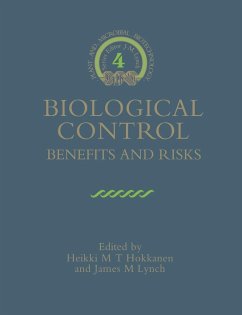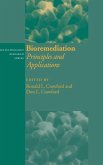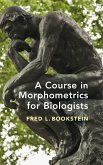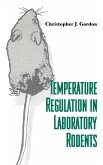This book discusses and debates the benefits and risks associated with biological control.
Biological control of insect pests, plant pathogens and weeds, is the only major alternative to the use of pesticides in agriculture and forestry. As with all technologies, there are benefits and risks associated with their utilization. This book is the outcome of a unique gathering of specialists to discuss and debate the benefits and risks associated with biological control. After intensive interaction it was concluded that we must place greater emphasis on the benefits, while not ignoring the potential risks. The authors address the various techniques and approaches used in biological control, including state-of-the-art reports and economic and risk analyses. The book will be of interest to researchers and postgraduate students in academia and industry in biotechnology, agriculture, forestry and environmental sciences.
Table of content:
Overview of benefits and risks of biological control introductions; Part I. Biological Invasions: 1. Suppressiveness of soils to invading micro-organisms Claude Alabouvette and C. Steinberg; 2. Biotechnology: environmental impacts of introducing crops and biocontrol agents in North American agriculture David Pimentel; 3. Frequency and consequences of insect invasions Joop C. van Lenteren; 4. Integrated pest management (IPM) in fruit orchards Torgeir Edland; Part II. Classical Biocontrol: 5. Benefits and risks of classical biological control David J. Greathead; 6. Potential impacts on threatened and endangered insects species in the United States from introductions of parasitic hymenoptera for the control of insect pests Keith R. Hopper; 7. Lessons from post-release investigations in classical biological control: the case of Microctonus aethiopoides Loan (Hym., Braconidae) introduced into Australia and New Zealand for the biological control of Sitona discoideus gyllenhal (Col., Curculionidae Jean-Paul Aeschlimann; 8. Host specificity screening of insect biological weed control agents as part of an environmental risk assessment Bernd Blossey; Part III. Augmentative Control: 9. The use of exotic organisms as biopesticides: some issues Jeff Waage; 10. Use of Trichogramma in Maize - estimating environmental risks D. A. Andow, C. P. Lane and D. M. Olson; 11. Entomopathogenic nematodes in biological control: feasibility, perspectives and possible risks Ralf-Udo Ehlers and Arne Peters; 12. Pseudomonads as biocontrol agents of diseases caused by soil-borne pathogens Geneviève Défago and Christoph Keel; 13. Biological control of soil-borne pathogens of wheat: benefits, risks and current challenges David M. Weller, Linda S. Thomashow and R. James Cook; 14. Genetically engineered fluorescent pseudomonads for improved biocontrol of plant pathogens David N. Dowling, Bert Boesten, Daniel J. O'Sullivan, Peter Stephens, John Morris and Fergal O'Gara; 15. Biological control of foliar fungal diseases Nyckle J. Fokkema; 16. The use of fungi, particularly Trichoderma spp. and Gliocladium spp., to control root rot and damping-off diseases Dan Funck Jensen and Hanne Wolffhechel; 17. Bacillus thuringiensis in pest control Raymond J. C. Cannon; 18. Opportunities with baculoviruses Jürg Huber; Part IV. Use of Genetically-Modified Organisms: 19. Assessing the potential benefits and risks of introducing natural and genetically manipulated bacteria for the control of soil-borne root diseases Maarten H. Ryder and Raymond L. Correll; 20. Serodiagnostic methods for risk assessment of Pseudomonas cepacia as a biocontrol agent Kenichi Tsuchiya; 21. Benefits and risks of using genetically engineered baculoviruses as insecticides Norman E. Crook and Doreen Winstanley; 22. Mathematical modelling of gene exchange in soil James M. Lynch, M. J. Bazin and J. Choi; 23. Pest resistance to Bacillus thuringiensis: ecological crop assessment for Bt gene incorporation and strategies of management C. Howard Wearing and Heikki M. T. Hokkanen; 24. An international perspective for the release of genetically engineered organisms for biological control Max J. Whitten; Part V. Economics and Registration: 25. Development of the biocontrol fungus Gliocladium virens: risk assessment and approval for horticultural use Robert D. Lumsden and J. F. Walter; 26. Economics of classical biological control: a research perspective J. M. Cullen and Max J. Whitten; 27. Economics of biocontrol agents: an industrial view Timo Törmälä; 28. Registration requirements of biological control agents in Germany and in the European Union Fred A. J. Klingauf; Index.
Hinweis: Dieser Artikel kann nur an eine deutsche Lieferadresse ausgeliefert werden.
Biological control of insect pests, plant pathogens and weeds, is the only major alternative to the use of pesticides in agriculture and forestry. As with all technologies, there are benefits and risks associated with their utilization. This book is the outcome of a unique gathering of specialists to discuss and debate the benefits and risks associated with biological control. After intensive interaction it was concluded that we must place greater emphasis on the benefits, while not ignoring the potential risks. The authors address the various techniques and approaches used in biological control, including state-of-the-art reports and economic and risk analyses. The book will be of interest to researchers and postgraduate students in academia and industry in biotechnology, agriculture, forestry and environmental sciences.
Table of content:
Overview of benefits and risks of biological control introductions; Part I. Biological Invasions: 1. Suppressiveness of soils to invading micro-organisms Claude Alabouvette and C. Steinberg; 2. Biotechnology: environmental impacts of introducing crops and biocontrol agents in North American agriculture David Pimentel; 3. Frequency and consequences of insect invasions Joop C. van Lenteren; 4. Integrated pest management (IPM) in fruit orchards Torgeir Edland; Part II. Classical Biocontrol: 5. Benefits and risks of classical biological control David J. Greathead; 6. Potential impacts on threatened and endangered insects species in the United States from introductions of parasitic hymenoptera for the control of insect pests Keith R. Hopper; 7. Lessons from post-release investigations in classical biological control: the case of Microctonus aethiopoides Loan (Hym., Braconidae) introduced into Australia and New Zealand for the biological control of Sitona discoideus gyllenhal (Col., Curculionidae Jean-Paul Aeschlimann; 8. Host specificity screening of insect biological weed control agents as part of an environmental risk assessment Bernd Blossey; Part III. Augmentative Control: 9. The use of exotic organisms as biopesticides: some issues Jeff Waage; 10. Use of Trichogramma in Maize - estimating environmental risks D. A. Andow, C. P. Lane and D. M. Olson; 11. Entomopathogenic nematodes in biological control: feasibility, perspectives and possible risks Ralf-Udo Ehlers and Arne Peters; 12. Pseudomonads as biocontrol agents of diseases caused by soil-borne pathogens Geneviève Défago and Christoph Keel; 13. Biological control of soil-borne pathogens of wheat: benefits, risks and current challenges David M. Weller, Linda S. Thomashow and R. James Cook; 14. Genetically engineered fluorescent pseudomonads for improved biocontrol of plant pathogens David N. Dowling, Bert Boesten, Daniel J. O'Sullivan, Peter Stephens, John Morris and Fergal O'Gara; 15. Biological control of foliar fungal diseases Nyckle J. Fokkema; 16. The use of fungi, particularly Trichoderma spp. and Gliocladium spp., to control root rot and damping-off diseases Dan Funck Jensen and Hanne Wolffhechel; 17. Bacillus thuringiensis in pest control Raymond J. C. Cannon; 18. Opportunities with baculoviruses Jürg Huber; Part IV. Use of Genetically-Modified Organisms: 19. Assessing the potential benefits and risks of introducing natural and genetically manipulated bacteria for the control of soil-borne root diseases Maarten H. Ryder and Raymond L. Correll; 20. Serodiagnostic methods for risk assessment of Pseudomonas cepacia as a biocontrol agent Kenichi Tsuchiya; 21. Benefits and risks of using genetically engineered baculoviruses as insecticides Norman E. Crook and Doreen Winstanley; 22. Mathematical modelling of gene exchange in soil James M. Lynch, M. J. Bazin and J. Choi; 23. Pest resistance to Bacillus thuringiensis: ecological crop assessment for Bt gene incorporation and strategies of management C. Howard Wearing and Heikki M. T. Hokkanen; 24. An international perspective for the release of genetically engineered organisms for biological control Max J. Whitten; Part V. Economics and Registration: 25. Development of the biocontrol fungus Gliocladium virens: risk assessment and approval for horticultural use Robert D. Lumsden and J. F. Walter; 26. Economics of classical biological control: a research perspective J. M. Cullen and Max J. Whitten; 27. Economics of biocontrol agents: an industrial view Timo Törmälä; 28. Registration requirements of biological control agents in Germany and in the European Union Fred A. J. Klingauf; Index.
Hinweis: Dieser Artikel kann nur an eine deutsche Lieferadresse ausgeliefert werden.








